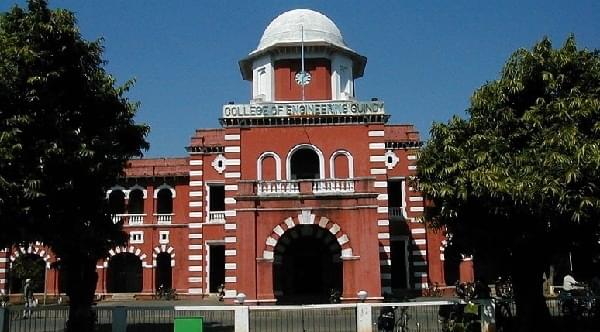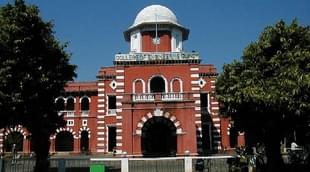Commentary
Academia's Failure In Contributing To The Reform Process
Kesava
Aug 23, 2012, 05:19 AM | Updated Apr 29, 2016, 02:14 PM IST
Save & read from anywhere!
Bookmark stories for easy access on any device or the Swarajya app.


Let us start with a question: “Name one device that you use in your daily life, be it electronic, electrical, mechanical, chemical etc., that has been designed by an Academic institution in India and has been taken to mass markets thereafter”. Keep thinking. It is hard to find one such device or product that is “made by Indians”, “made for India” and “made in India”. There are, of course, many enterprises which are founded in India by Indians that are able to enter foreign markets and flourish. But again, do any of those companies have a product that bases itself on a theory developed in India by Indians or research done in the Indian Academia by Indian researchers?
One may say DRDO’s formula to process and preserve Indian food items for a long time is a product that falls in this category, but then, what was the role of the Indian Academia in this? The difference between an educational institution and a defense institution developing products lies in secrecy. DRDO’s formulas will never be published in any conference for any entrepreneur to exploit. They will be shared with select few on “nomination basis” by the almighty Government of India. What is the role of an individual here? Infinitesimal? Yes.
Now, let us come to the point of why this is an important question. A look at the erstwhile world leaders shows that the Academia plays a huge role in making a country’s future prosperous. Be it the North American countries, the European countries or even the Asian countries, historically those countries which attracted students from across the world for the purpose of higher education were prosperous. Therefore, keyword for being a world leader in future is: academic research in technology. Today, what China is set to achieve is again the same. As China marches towards prosperity, the Chinese continue to improve their performance in academics. As they continue to do better in academics, they continue to prosper. The cycle is visible in the pace with which the Chinese are pushing ahead.
They developed a cure to H1N1. They developed a communication protocol – TDSCDMA – that is superior to the United States’ greatest success – CDMA. As quoted in this paper, TD-SCDMA by being advanced compared to the 3G version of CDMA, gives an advantage to the Chinese monetarily by avoiding royalty to be paid to Qualcomm. They developed a security standard that may well be a de-facto standard in the coming future – WAPI. In fact, Chinese research in advanced sciences is so fascinating that when they reported that they could teleport photons over 100 Kms, in May 2012, it took most of the advanced communications researchers by storm. The Chinese hold many more such interesting innovations/discoveries/
Where is the BIG innovation from the Indian Academia?
The Academia have a huge role to play in India. Many problems that India is facing today could be solved through proper academic research with a single minded goal – to make things better. For instance, consider housing. We know that today in India construction costs are sky-rocketing, thereby increasing real-estate prices. Of course, new technologies may not affect cost of the land but new technologies can definitely reduce construction costs thereby making housing affordable. Have we had at least one such improvement through academic research? Why?
Consider also, for example, the issue of increasing transportation costs. The Indian academia hasn’t yet been able to come up with any technology or any system that can bring down the cost. Recent developments in Karnataka through IISc’s CiSTuP, and in Gujarat through CEPT show that the Indian Academia can deliver. CiSTuP, while being a recent establishment, has already proved its worth by playing a very pro-active role in the planning “Namma Metro” in Bengaluru. CEPT played a huge role in making Ahmedabad BRTS service one the best executed projects. Different departments in CEPT have also been actively publishing and have been involved in technological development, framework development and advising Governments in framing policy. However, the research in these institutions is yet to reach a maturity level where the theories can be productized for the benefit of the people. As with most of the problems in India, Government of India has no interest in nurturing the entrepreneurial spirit, or at the least allowing somebody else to do it. Where is the BIG innovation from the Indian Academia?
In fact, despite the liberalization of the economy, few enterprises came up in India as a result of academic research. Enterprises did come up, but they were not due to a new innovative product or idea based on research in the academia. Whatever new enterprises came up were to do “some jobs faster owing to the cheap labor costs” i.e., service oriented enterprises.
To top this, most of the times, when individuals do come up with some very innovative ideas, they sincerely tell the media – “I am not here for money. I want to help the poor”. So much so that even a young and budding innovator like Pravin Mistry said “I am not really interested in making money“. Surely the only thing missing in such statements is “World Peace,” something like the standard textbook answers at beauty pageants!
Research And Reforms Process – The Missing Debate
So far, the story of reforms and liberalization has been that of money-making. Many pulled themselves out of poverty, thanks to the reforms process. Alarming, it is indeed, that this question never even comes up in any debate on the education system in India. Ultimately, if advanced studies and higher education cannot make life better, why do we need to have these degrees issued in the first place?
To put India into the circle of “academic research => innovation => prosperity => academic research” like the Chinese have set themselves in, India, probably requires Archimedes’ Lever. Who will be Archimedes and what would his Lever be? Only time can tell. But what should such a Lever be?
- Research by institutions like CiSTuP, CEPT etc., should be productized. Such productization processes should involve “NO” government agency
- The profits made from such productization process should be partly fed back into the originating institution and here too there should be “NO” involvement of any government agency
- Stress should be on SMSEs and MSMEs with big corporations playing important role in the Advisory board. This process should be facilitated by the Government.
Unless there is a “big” movement in this direction, India’s woes in handling the liberalization process will continue. One will be astonished with some of the world class research that happens in corners of the country.
Did you know that IITD’s Linux User Group and repository of GCC (GNU C Compiler – a computer science student/pro will know), is one of the world’s most renowned by researchers and professionals alike?
Did you know that one of the best prime number test, which is used in high tech security applications, called the AKS Primality Test, originated from IIT Kanpur?
Did you know that Anna University students developed some of the best low power electronic circuit designs ever in the world?
Despite some of such wonderful discoveries/innovations/
PS: One can always say that “Reservations should be removed from such educational and research organizations which convert their research into products,” but then how dare any Archimedes do that! If ever any Archimedes does that, he would find himself displaced from the bathtub instead of the water, if you know what I mean!





